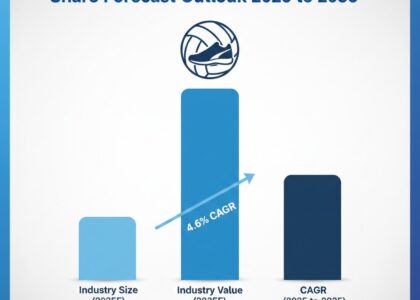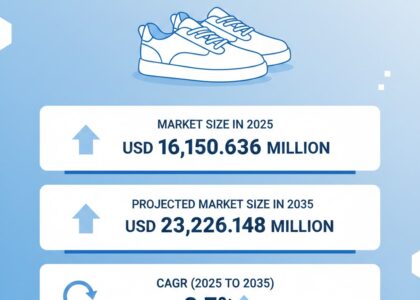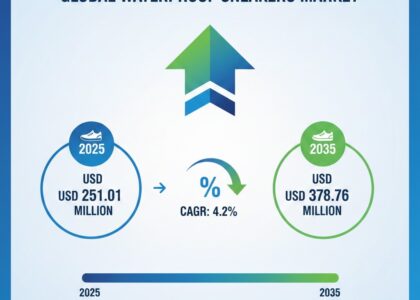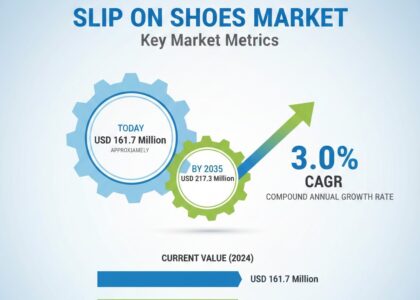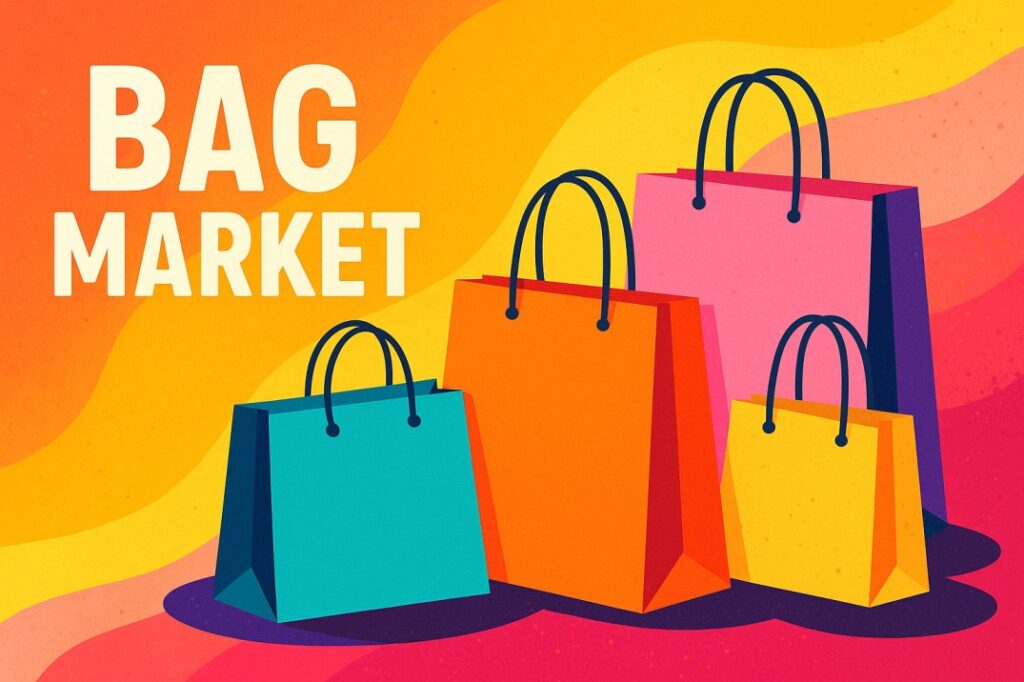
The global bag market is expected to experience consistent growth over the next decade, with its valuation forecasted to rise from USD 45.8 billion in 2025 to USD 63.5 billion by 2035, growing at a compound annual growth rate (CAGR) of 3.7%. In 2024, the market stood at USD 44.1 billion, reflecting a steady increase in demand across consumer and commercial applications.
This growth is primarily driven by evolving lifestyle preferences, rising environmental consciousness, and innovations in material and product design. From fashion-forward handbags to eco-conscious tote bags and functional travel luggage, the global bag industry is transforming to meet modern expectations.
Request Your Sample Now – Unlock Growth Potential and Discover Key Market Opportunities!
https://www.futuremarketinsights.com/reports/sample/rep-gb-14380
At its core, the bag market comprises a wide array of products from personal accessories like handbags, backpacks, and totes to commercial-use products such as shopping bags, travel luggage, courier pouches, and packaging bags.
These products serve distinct yet overlapping purposes, which range from portability and convenience to branding and protection of goods. The relevance of the bag industry is felt across fashion, e-commerce, logistics, travel, and consumer goods sectors.
Key Takeaways from the Bag Market
- Plastic bags are expected to account for approximately 52.3% of the global bag market in 2025.
- The retail & consumer segment is projected to lead the market with an estimated 36.7% share by 2025.
- The USA bag market is forecasted to grow at a CAGR of 3.9% from 2025 to 2035.
- The UK bag market is expected to expand at a CAGR of 3.5% over the same period.
- The European Union (EU) will likely see a 3.6% CAGR between 2025 and 2035.
- Japan is projected to experience a CAGR of 3.8% in the bag market through 2035.
- South Korea is anticipated to grow at a CAGR of 3.7% from 2025 to 2035.
Key Drivers of Growth: What’s Fueling the Momentum?
- Sustainability and Reusability: With the global movement toward reducing single-use plastics, reusable bags made from eco-friendly materials like jute, cotton, paper, and recycled fabrics have surged in popularity. Brands are responding to environmental mandates and consumer preferences by redesigning products to be more durable, recyclable, and biodegradable.
- Fashion and Personalization: In the fashion industry, bags are more than accessories—they’re identity statements. Designers and brands continue to launch seasonal collections that combine utility with aesthetics. Personalization, such as monograms or custom artwork, has also become a driver for premium bag sales.
- Growth in Travel and Tourism: The rise in domestic and international travel has increased the demand for suitcases, duffel bags, backpacks, and organizers. Lightweight and ergonomic travel solutions are now crucial, especially in the post-pandemic era, where functionality and hygiene are prioritized.
- E-commerce and Retail Evolution: With the boom of online shopping, retailers are seeking packaging solutions that are both functional and brand-enhancing. Custom shopping bags and courier packaging have become integral to a business’s identity, influencing customer perception and loyalty.
- Urban Lifestyle and Daily Utility: Modern consumers—especially in urban areas—require bags that complement their fast-paced lifestyles. Multifunctional bags with compartments for laptops, gadgets, and daily essentials have become a norm, blending practicality with design.
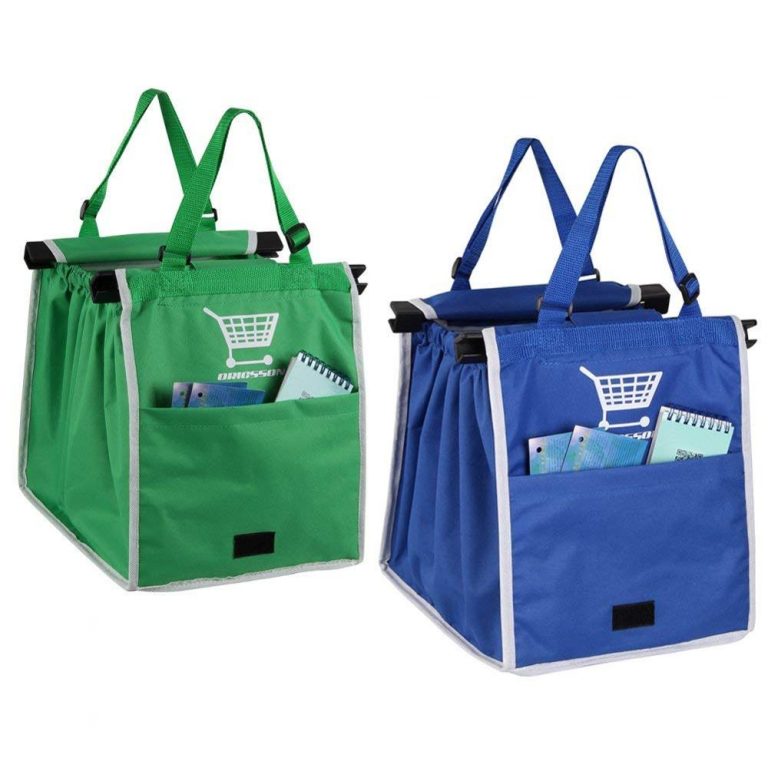
Urbanization and Commuting Trends Fueling Demand for Backpacks and Sling Bags
As cities become more populated and daily commuting becomes more structured, there’s been a surge in demand for compact, ergonomic, and stylish bags suitable for urban life. Commuters prefer lightweight backpacks with padded compartments for gadgets and essentials, while young professionals are leaning toward sling bags and messenger bags for their ease of access and minimalist design.
These commuting trends are also influencing innovations in bag ergonomics, such as adjustable shoulder straps, ventilated back panels, and weight-distribution technologies—making bags not just stylish but health-conscious.
Competitive Landscape: Players, Innovation, and Strategy
The competitive landscape of the bag market is highly fragmented, with a mix of global powerhouses and niche local players. Key companies include:
- Samsonite
- Tumi
- Louis Vuitton
- Nike
- Adidas
- Fjällräven
- EcoRight
Key Segmentation of the Bag Market
By Material Type:
- Plastic
- Paper
- Textile
By Product Type:
- T-Shirt Bags
- Gusseted Bags
- Lay Flat Bags
- Garbage/Refuse/Trash Bags
- Woven Bags
- Other Bags
By End User:
- Retail & Consumer
- Grocery Products
- Food & Beverage
- Clothing & Apparel
- Others
- Institutional Services
- Hospitality
- Healthcare
- Others
- Industrial End Use
- Household
By Region:
- North America
- Latin America
- Western Europe
- Eastern Europe
- South Asia and Pacific
- East Asia
- Middle East and Africa
About Future Market Insights (FMI)
Future Market Insights, Inc. (ESOMAR certified, recipient of the Stevie Award, and a member of the Greater New York Chamber of Commerce) offers profound insights into the driving factors that are boosting demand in the market. FMI stands as the leading global provider of market intelligence, advisory services, consulting, and events for the Packaging, Food and Beverage, Consumer Technology, Healthcare, Industrial, and Chemicals markets. With a vast team of over 400 analysts worldwide, FMI provides global, regional, and local expertise on diverse domains and industry trends across more than 110 countries.
Contact Us:
Future Market Insights Inc.
Christiana Corporate, 200 Continental Drive,
Suite 401, Newark, Delaware – 19713, USA
T: +1-347-918-3531
For Sales Enquiries: sales@futuremarketinsights.com
Website: https://www.futuremarketinsights.com
LinkedIn| Twitter| Blogs | YouTube


